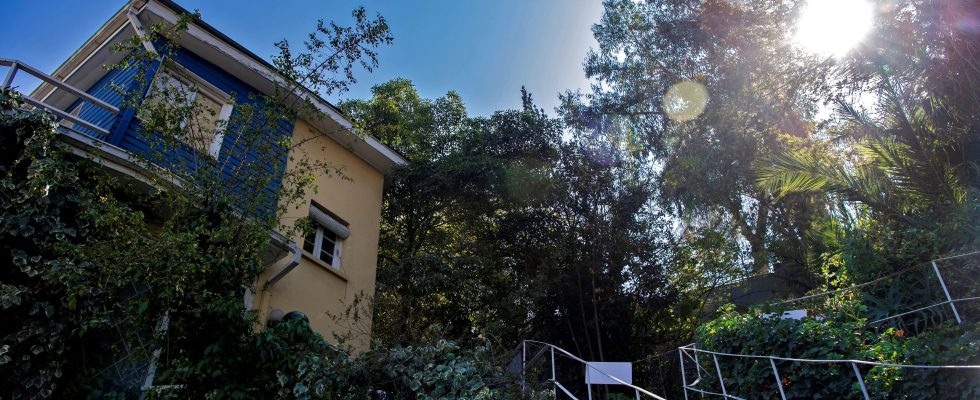Visiting the house of a missing person does not give the impression of finding him or her. It’s probably not made for that. Pablo Neruda’s house is no exception to the rule. A house full of stairs, cluttered with travel souvenirs, vintage furniture, friends’ paintings. Irrelevant trinkets tell us that the revolutionary poet was an ordinary tourist. It is the museum of old-fashioned things, their reconstruction leaves little room for the great mystery of the place: what connection with writing? Here it is. He had it built for his mistress, Matilde Urrutia, known as La Chascona (the shaggy one) who will give her name to the museum. It is located in Bellavista, at the foot of Mount San Cristobal, one of the old neighborhoods of Santiago, very typical.
In the early 1950s, when the two lovers purchased the land, it was crossed by a stream, which continued to sing and refresh the patio once the house was built. A steep, riverine love nest of sorts, a source of rhyme and alliteration. After the death of the lovers, to turn the house into a museum, the stream was covered, diverted or dried up, this is the price of what we call culture, this factory of regrets and enigmas. I didn’t buy anything at the store, not even a magnet for my uncle’s fridge, I would have felt like I was betraying the Pueblo Unido with this consumerist reflex.
Leaving La Chascona, we walk in small streets, with human-sized houses, the neighborhood reminds me of my Colonia Roma, in Mexico. It’s to tears of joy. Marco and Laurence take me to a Spanish restaurant where they serve giant shrimps cooked in a paella dish, dark with tiny pasta which has formed an almost caramelized crust that we have to peel off from the metal dish, we do this by hand. spoon, arguing over politeness: who takes the last? It’s a country where, by sneaking between McDonald’s, KFC and other junk food barbarities, you eat very well. The day before, I walked, alone, from one national museum to another: all on strike. It doesn’t seem to move many people. Culture is not vital here, its commercial value remains uncertain, which I find pretty cool.
Something exceptional
Dora didn’t want to let me go without a guide, but she only found the Lonely Planet at Fnac. She stuffed it in my suitcase, it’s rubbish. When I tell Marco that Chile is one of the last countries not to have its Michelin guide, he looks down, saddened. He would like to change it, this country that he had to leave in 1973 with his entire family, to flee the dictator. He went back to change it, and the funny thing is that he’s going to succeed, without becoming president. I came to check it out on site. And after a week, I confirm: his cabernet sauvignon, Piedra Sagrada 2022, is the bomb. The 2023 is still in barrel, so I won’t comment on that. But 2022… you can go there, it is more promising than liberation theology.
The construction of the winery is not yet finished but Marco and Laurence are already organizing, in the three and a half hectares of their vineyard in full bloom, their first music-dance-theatre festival.
On the program, we start by tasting the 2016 in front of the wine worker’s house. Then we walk to the spiral tower where the brilliant Canadian mezzo-soprano, Marie-Annick Beliveau, performs a piece by Marco-Antonio Perez-Ramirez created at the Montpellier opera in 2007 and which, in the image from its Piedra Sagrada 2014, ages well.
A little later, at the other end of the vineyard, the children of the Francisco-Varela school (1946-2001) perform a dance piece that Laurence Saboye created for them. It’s a private, experimental school, for difficult children like me. You just have to enter it, cross it to understand that there is something exceptional happening there too. Which I will tell you about next week.
Christophe Donner, writer
.
